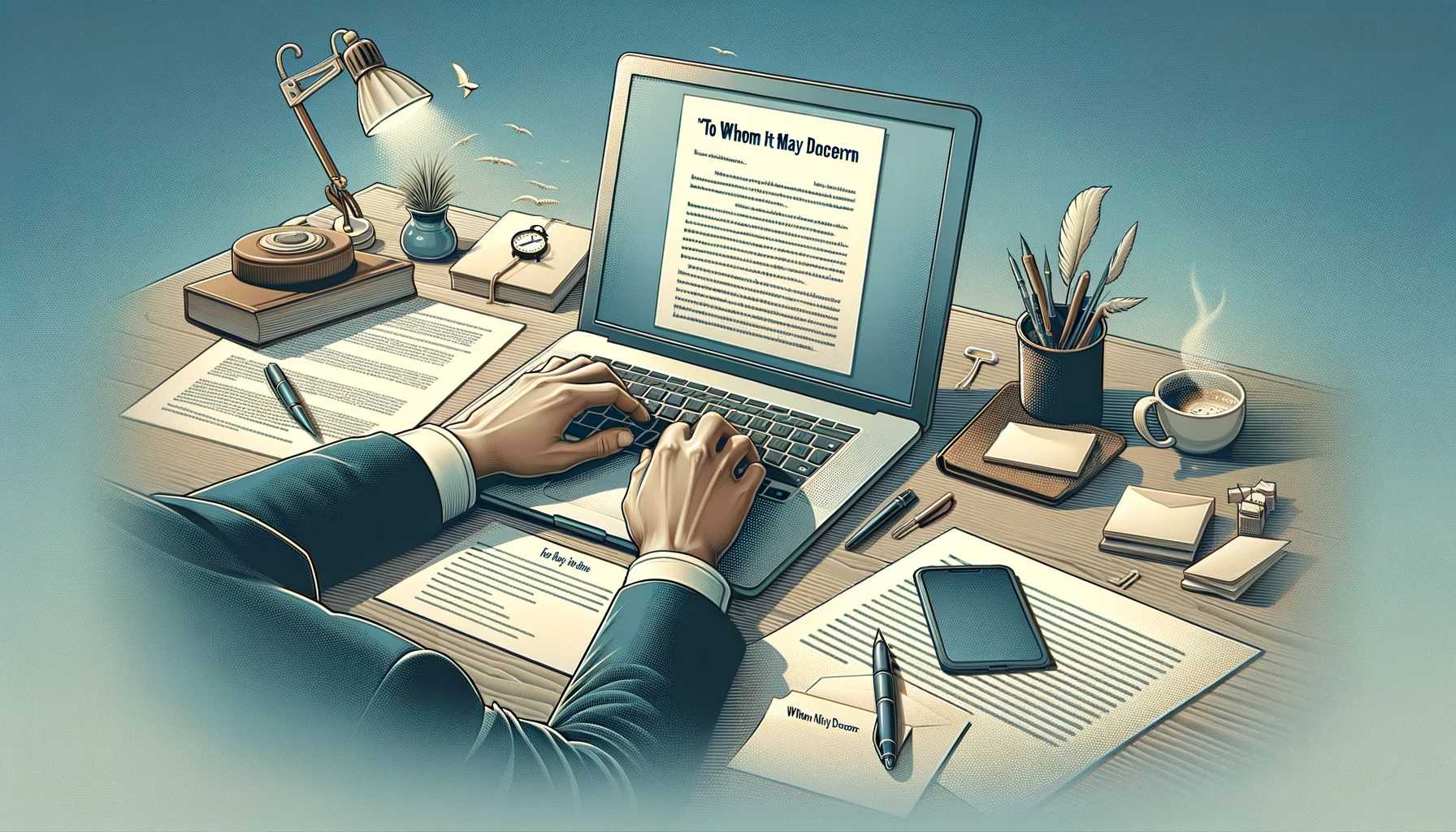Crafting a Tailored ''To Whom It May Concern'' Cover Letter: A Personalized Approach to Professionalism
Greetings, job seekers and career enthusiasts! As you embark on the quest for your dream job, the phrase ''To Whom It May Concern'' in a cover letter might feel like a shot in the dark, a generic address lacking the personal touch we all crave. However, fear not! Today, we're delving into the art of crafting a ''To Whom It May Concern'' cover letter that exudes both professionalism and a human touch. So, grab your favorite pen and let's embark on this journey of personalized yet sophisticated communication.
1. Understanding the Purpose of "To Whom It May Concern":
Let's start by demystifying the intent behind using "To Whom It May Concern." In situations where you don't have a specific contact person's name, this salutation serves as a polite and neutral way to open your cover letter. While it may lack the warmth of addressing someone by name, it still sets a tone of formality and respect.
2. The Art of Research:
Before you dive into the crafting process, conduct thorough research on the company. While you may not have a specific person's name, you can often find valuable information on their website, LinkedIn profiles, or through a quick call to the company's HR department.
Look for clues like the name of the HR manager, department head, or any team leads mentioned on the company's organizational chart. Gathering this information can add a personalized touch to your letter and demonstrate your commitment to understanding the company's structure.
3. Tailoring Your Introduction:
Now, armed with the knowledge you've gathered, let's tailor your introduction. Instead of a generic "To Whom It May Concern," consider alternatives that maintain professionalism while showing effort. For instance:
- "Dear Hiring Manager:"
- A versatile and widely accepted alternative, addressing the hiring manager directly conveys that you've put thought into your application.
- "Dear [Department] Hiring Team:"
- If you know the specific department you're applying to, addressing the team can add a touch of personalization.
4. Opening with a Strong Hook:
Your opening paragraph is your chance to captivate the reader's attention. Avoid clichés and dive into a compelling narrative or a concise statement that immediately communicates your enthusiasm for the position.
For example:
"As a dedicated marketing professional with a passion for creating impactful campaigns, I was thrilled to discover the exciting opportunities within your esteemed organization."
5. Highlighting Your Value Proposition:
In the body of your cover letter, focus on articulating your value proposition. Tailor your experiences and skills to align with the company's needs, emphasizing how you can contribute to their goals.
Use specific examples to showcase your achievements and quantify your impact where possible. This not only adds credibility but also gives the reader a tangible understanding of your capabilities.
6. Demonstrating Company Knowledge:
Take the opportunity to demonstrate your understanding of the company's values, mission, and recent achievements. Mention specific projects, initiatives, or accolades that caught your attention and explain how your skills align with the company's trajectory.
For instance:
"I was particularly impressed by your recent sustainability initiative, and I am eager to bring my expertise in eco-friendly marketing strategies to contribute to your ongoing commitment to environmental responsibility."
7. Concluding with Confidence:
In your closing paragraph, express your eagerness for the opportunity to discuss your application further in an interview. Reiterate your enthusiasm for the role and your confidence in contributing to the company's success.
Avoid generic phrases like "looking forward to hearing from you" and instead opt for a more proactive approach:
"I am excited about the possibility of contributing to [Company Name]'s continued success and would welcome the opportunity to discuss how my skills align with your needs in more detail during an interview."
8. Professional Sign-Off:
Choose a professional sign-off that aligns with the tone of your letter. Opt for phrases like "Sincerely," "Best Regards," or "Yours Truly." These sign-offs exude professionalism and bring a polished finish to your cover letter.
9. Proofread Thoroughly:
Before hitting that "send" button, proofread your cover letter meticulously. Typos and grammatical errors can detract from the professionalism you've worked hard to cultivate. Consider asking a friend or colleague to review it as well for a fresh perspective.
10. Final Personal Touch:
In your closing, consider adding a personal touch by reiterating your appreciation for the opportunity and expressing genuine enthusiasm about the possibility of joining the team.
For example:
"Thank you for considering my application. I am excited about the prospect of contributing to [Company Name]'s innovative projects and dynamic team."
Conclusion:
Crafting a "To Whom It May Concern" cover letter doesn't mean sacrificing personalization or professionalism. By conducting research, tailoring your introduction, highlighting your value proposition, and demonstrating company knowledge, you can create a cover letter that not only respects formalities but also resonates with the human touch.
Remember, while you may not have a specific name, your efforts to make your application as personalized as possible will set you apart. So, here's to crafting cover letters that strike the perfect balance between sophistication and a genuine connection. Best of luck on your job-seeking journey!









